Almost half of all global solar capacity will be co-located with storage by 2060, compared to around 2% today, a new report published by DNV predicts.
The Energy Transition Outlook 2025 report says that solar power will account for 47% of electricity generation worldwide by 2060, increasing fivefold from 2024. It adds that from the mid-2030s onwards, around half of new solar installations will be co-located with storage, up from around 6.6% of installations today.
This trajectory is expected to lead to some regions of the world, namely the Middle East and North Africa, the Indian Subcontinent, South East Asia and Sub-Saharan Africa, having more co-located solar-plus-storage capacity than standalone solar capacity by 2060.
DNV explains that by the mid-2030s, the difference in average received energy price between co-located and standalone solar projects will be significant enough that the annual revenue of a co-located utility plant will be around 15% higher than a standalone solar plant, despite an OPEX twice as high and a lower capacity factor.
The report also predicts that in some regions of the world, distributed generation, encompassing behind-the-meter (BTM) residential and commercial solar and off-grid solar installations, will reach parity with or outpace utility-scale installations in the coming decades.
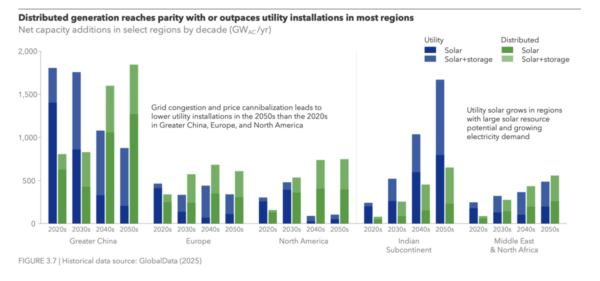
Utility-scale solar installations are expected to slow in Greater China, Europe and North America due to constricted grids and price cannibalization, while BTM distributed solar generation is projected to play a growing role in addressing the energy demand of buildings.
While BTM distributed solar generation for self-consumption supplied 2% of the total building electricity demand in 2024, this figure is expected to rise to 10% by 2060. By the same year, DNV expects BTM solar will represent 30% of all solar power and 13% of all global power generated.
The installation of off-grid solar systems is also expected to continue growing, providing electricity access to up to 10% of the global population by 2060. However, BTM installations are expected to outpace off-grid installations, accounting for around 40% of all distributed systems by 2050.
Elsewhere in the report, DNV says solar’s levelized cost of electricity is beginning to stabilize after a decade of rapid decline that brought an average annual drop of 8% over the last ten years. DNV is expecting an average annual drop of approximately 5% for the rest of this decade, followed by 3% in the 2030s and under 1% in the 2050s.
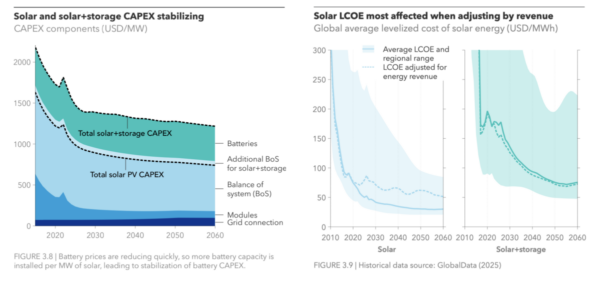
The report predicts future LCOE reductions will span from installation efficiencies and learning curves in components such as inverters. When considered globally, grid costs are forecast to be a larger part of a project budget than solar modules from the late 2040s.
The report’s headline figures also reveal that solar and wind energy will account for 32% of the global power mix by 2030. It continues that the growth of the two energy sources, combined with other sources including nuclear and hydropower, will lead to non-fossil fuel energy dominating from the mid-2050s onwards.
The report calls this energy transition inevitable. “No policy reversals, budgetary deficits, or geopolitical crisis will stop it,” it says. “Solar PV, onshore wind, and batteries – the three most important technologies needed for the transition – are now so inexpensive that they outcompete fossil energy in a constantly growing number of areas.”
This content is protected by copyright and may not be reused. If you want to cooperate with us and would like to reuse some of our content, please contact: editors@pv-magazine.com.
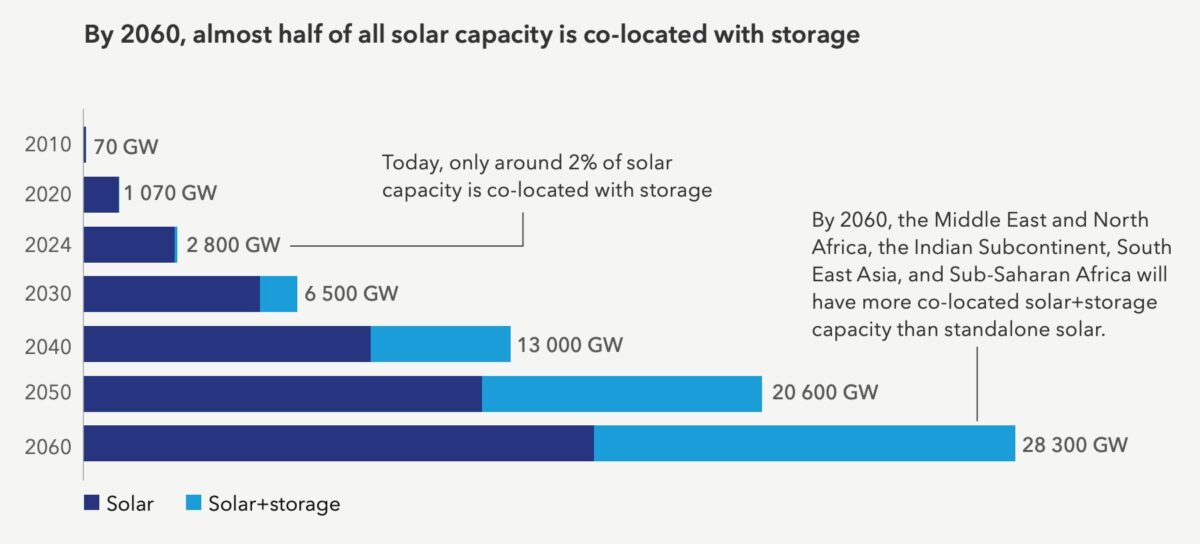



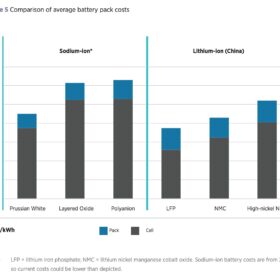
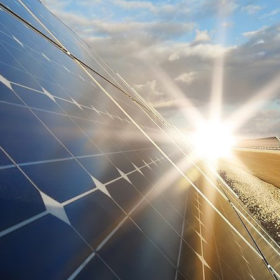

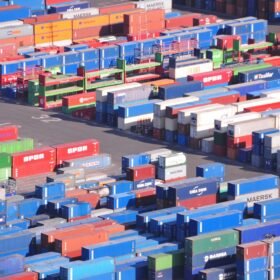
By submitting this form you agree to pv magazine using your data for the purposes of publishing your comment.
Your personal data will only be disclosed or otherwise transmitted to third parties for the purposes of spam filtering or if this is necessary for technical maintenance of the website. Any other transfer to third parties will not take place unless this is justified on the basis of applicable data protection regulations or if pv magazine is legally obliged to do so.
You may revoke this consent at any time with effect for the future, in which case your personal data will be deleted immediately. Otherwise, your data will be deleted if pv magazine has processed your request or the purpose of data storage is fulfilled.
Further information on data privacy can be found in our Data Protection Policy.